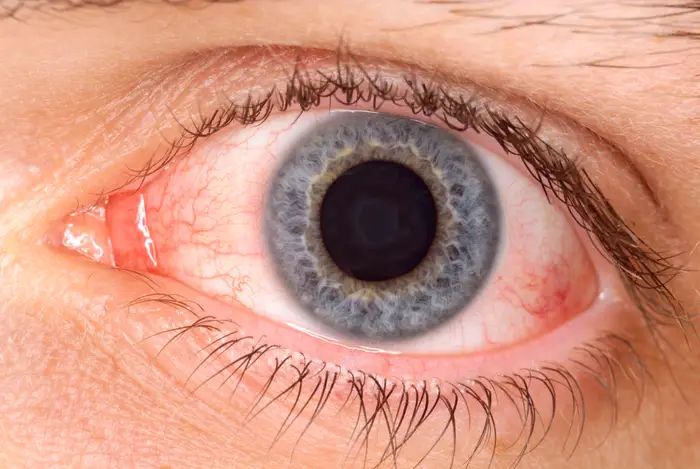Description

Copyright infringement not intended
Picture Courtesy: www.insider.com
Context: Ocular syphilis, if untreated, can lead to severe damage in diverse eye structures, such as the cornea, iris, retina, and optic nerve, posing risks to multiple organ systems over time.
About Syphilis
- Syphilis is a sexually transmitted infection (STI) caused by the bacterium Treponema pallidum.
- It can affect various parts of the body, including the eyes.
Origin of Syphilis of the eye
- Syphilis of the eye is a form of ocular syphilis, which is a manifestation of neurosyphilis. Neurosyphilis occurs when the bacterium invades the central nervous system, including the brain and spinal cord. Ocular syphilis can affect any part of the eye, such as the iris, retina, optic nerve, or cornea.
- The origin of syphilis of the eye is not clear, but it is believed that it may result from either direct infection of the eye by the bacterium through contact with infected genital or oral lesions, or from hematogenous spread of the bacterium from other parts of the body through the bloodstream.

Transmission of Syphilis of the eye
- Syphilis of the eye is transmitted in the same way as syphilis in general. The most common mode of transmission is through sexual contact with an infected person. This includes vaginal, anal, or oral sex.
- Syphilis can be transmitted from mother to child during pregnancy or childbirth, or through blood transfusion or organ transplantation from an infected donor.
- Syphilis is not transmitted by casual contact, such as sharing utensils, clothing, or towels, or by kissing on the cheek or lips. However, kissing on the mouth or performing oral sex on an infected person can transmit syphilis if there are open sores in the mouth or genitals.
Symptoms of Syphilis of the eye
- Syphilis of the eye can occur at any stage of syphilis infection, but it is more common in the late stages.
- The symptoms may vary depending on which part of the eye is affected, but they may include:
- Blurred vision or loss of vision
- Eye pain or redness
- Sensitivity to light
- Floaters or flashes in the visual field
- Inflammation or swelling of the eye
- Changes in pupil size or shape
- Headache or neck stiffness
- Syphilis of the eye can cause permanent damage to the eye if left untreated. It can also lead to complications such as glaucoma, cataracts, retinal detachment, optic atrophy, or blindness.
Cure for Syphilis of the eye
- Syphilis of the eye is curable with antibiotics. The type and duration of antibiotic treatment depend on the stage and severity of syphilis infection.
- The most commonly used antibiotic for syphilis is penicillin. However, some people may be allergic to penicillin or have resistant strains of syphilis. In such cases, alternative antibiotics such as doxycycline, azithromycin, or ceftriaxone may be used.
- It is important to complete the full course of antibiotic treatment as prescribed by the doctor. This will ensure that all the bacteria are killed and prevent relapse or reinfection.

Conclusion
- Ocular syphilis, resulting from the sexually transmitted bacterium Treponema pallidum, presents with symptoms such as blurred vision, eye pain, and redness. Timely diagnosis by an ophthalmologist, followed by appropriate antibiotic treatment, particularly with penicillin, is crucial for a cure and to prevent severe complications, including permanent vision impairment.
|
PRACTICE QUESTION
Q. What is the primary cause of ocular syphilis?
A) Bacterial infection
B) Viral infection
C) Fungal infection
D) Parasitic infection
Answer: A
Explanation:
Ocular syphilis is caused by the bacterium Treponema pallidum, which is responsible for syphilis.
|











